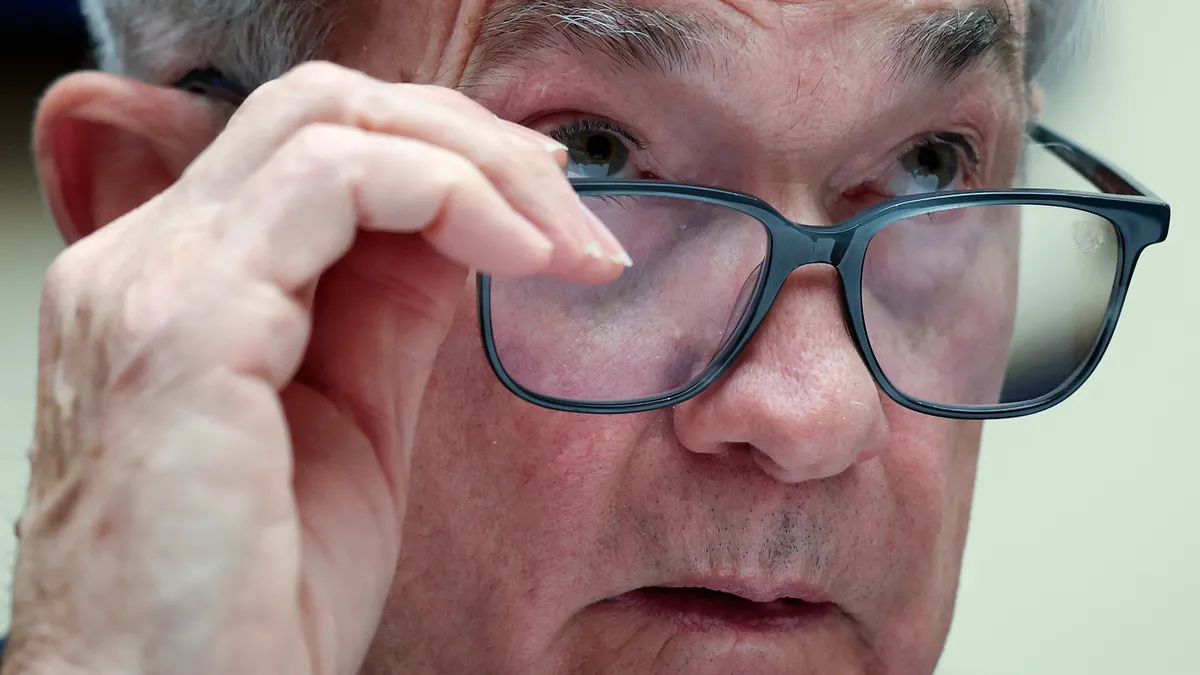Dive Brief:
- Federal Reserve Chair Jerome Powell said Monday that the central bank sees no need to rapidly cut borrowing costs, noting that the size of coming reductions to the main interest rate depend on the pace of economic growth.
- The policy-setting Federal Open Market Committee “is not a committee that feels like it’s in a hurry to cut rates quickly,” Powell said during a National Association for Business Economics webcast.
- “If the economy slows more than we expect, then we can cut faster — if it slows less than we expect, we can cut slower,” he said in response to a question. “We’re looking at a process that will play out over some time, not something we need to go fast on.”
Dive Insight:
FOMC policymakers on Sept. 18 cut the federal funds rate by a half percentage point to a range between 4.75% and 5% and, along with other central bank officials, forecast reductions in the rate to 4.4% by December and to 3.4% by the end of next year, according to their median projections.
Fed Governor Michelle Bowman, the sole dissenter from the FOMC decision, reiterated Monday that she believes her fellow policymakers underestimate inflation risks and should have trimmed the benchmark rate by just a quarter percentage point.
The core personal consumption expenditures price index, which excludes volatile food and energy prices, rose 2.7% in August from 2.6% in July, well above the central bank’s 2% target, the Bureau of Economic Analysis said Friday.
“Although it is important to recognize that there has been meaningful progress on lowering inflation, while core inflation remains around or above 2.5 percent, I see the risk that the committee's larger policy action could be interpreted as a premature declaration of victory on our price-stability mandate,” Bowman said in a speech.
The Fed’s projections on the future path for the federal funds rate aligns with predictions by a panel of 32 NABE economists surveyed in September, the association said Monday.
Nearly two-thirds of the panelists believe the FOMC at its most recent meeting cut “just in time,” and a quarter of them asserted that policymakers moved too late, NABE said.
“A monetary policy mistake is cited as the greatest downside risk by 39% of the panelists,” NABE President Ellen Zentner said in a statement, noting that the outcome of the Nov. 5 presidential election and the wars in Ukraine and the Middle East tied as the No. 2 risk.
The Fed began to ease monetary policy in September with confidence in the outlook for the economy, Powell said.
“We’re recalibrating policy to maintain the strength in the economy, not because of weakness in the economy,” he said.
“What you see is solid growth in the economy, and what you see is a solid labor market,” Powell said.
Although healthy, the job market “really has cooled,” he said. In the past several months wage growth has slowed, workers are quitting at a lower rate and vacancies have fallen more in line with the number of unemployed workers, Powell said.















